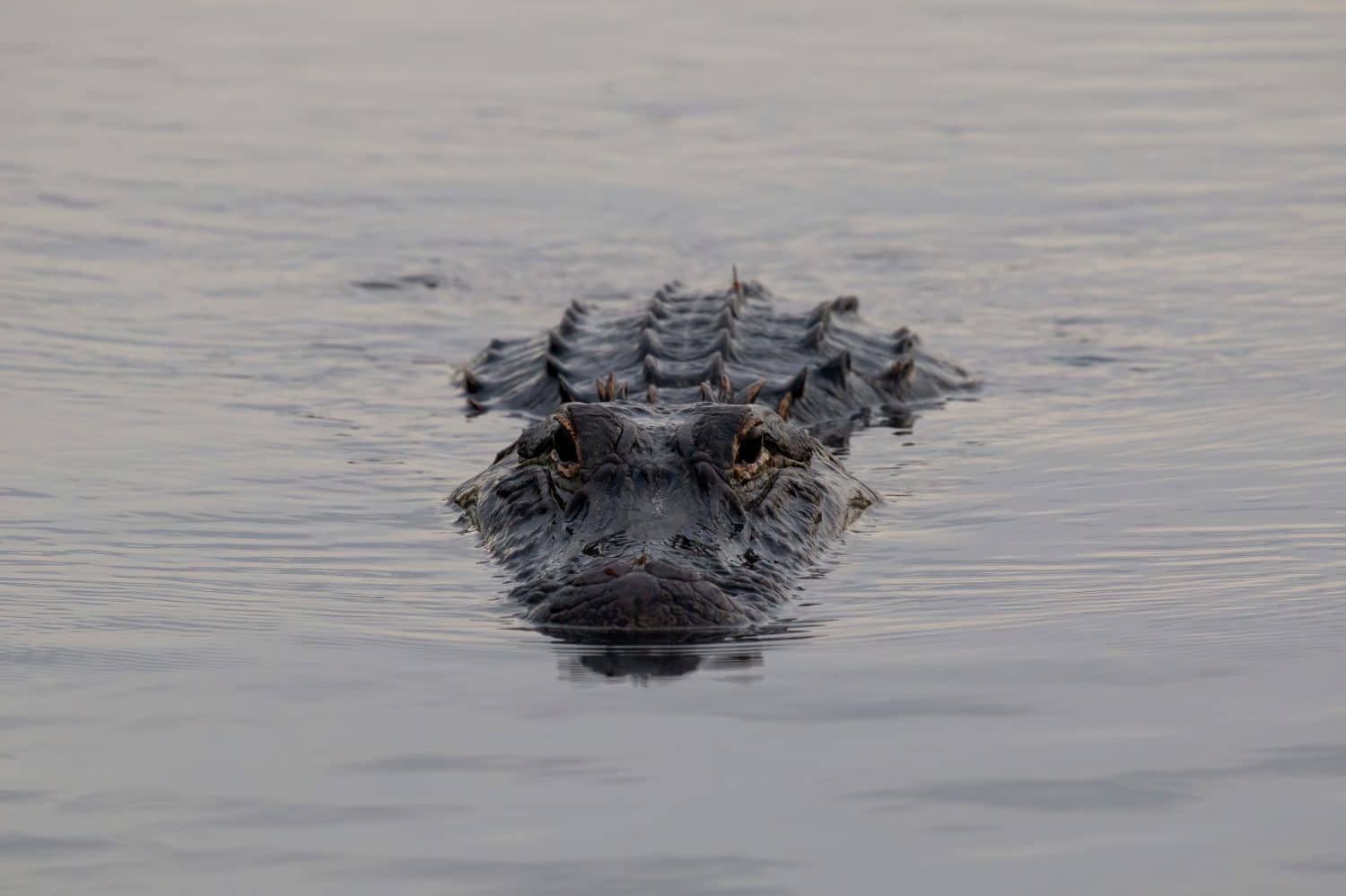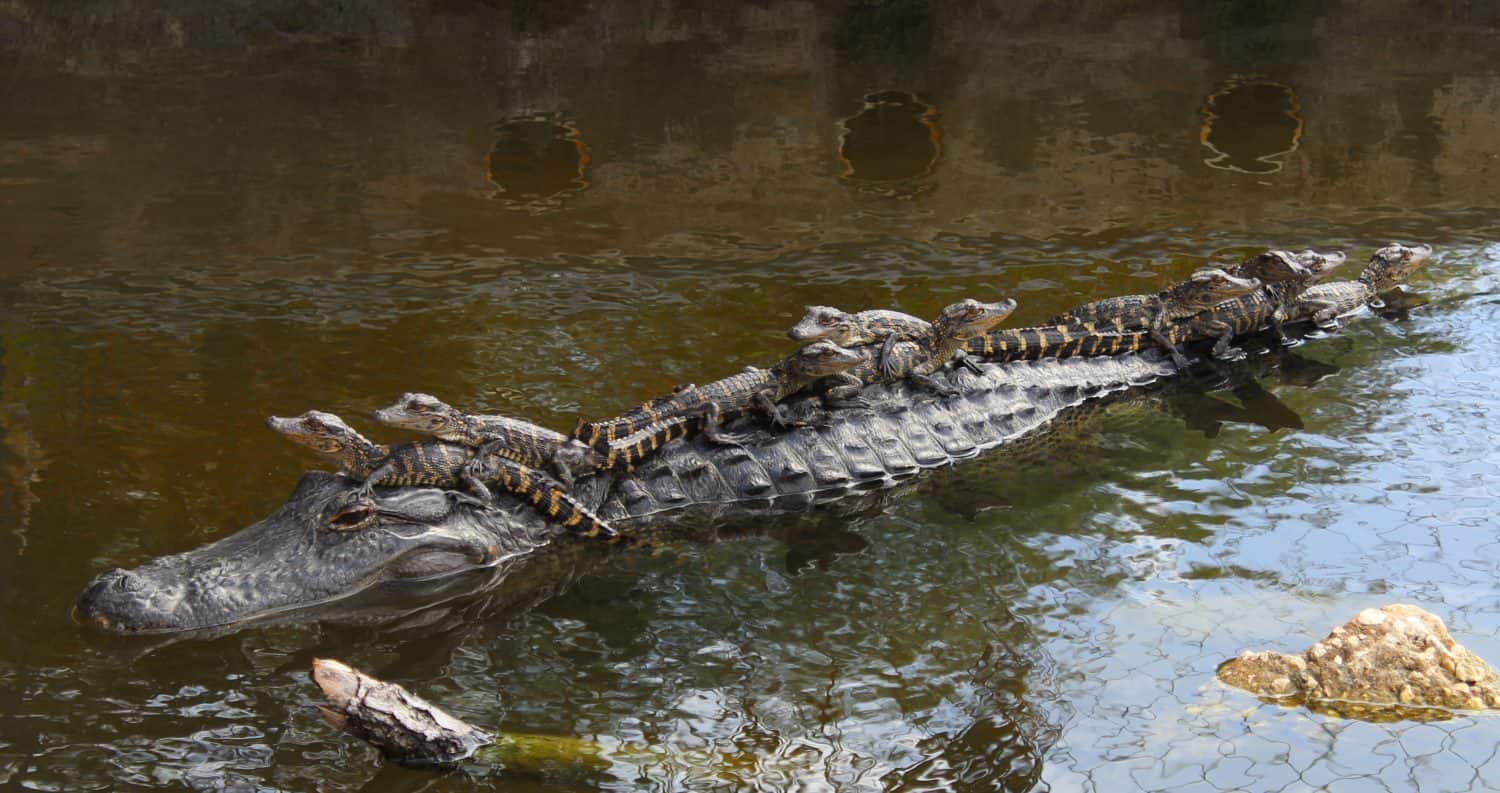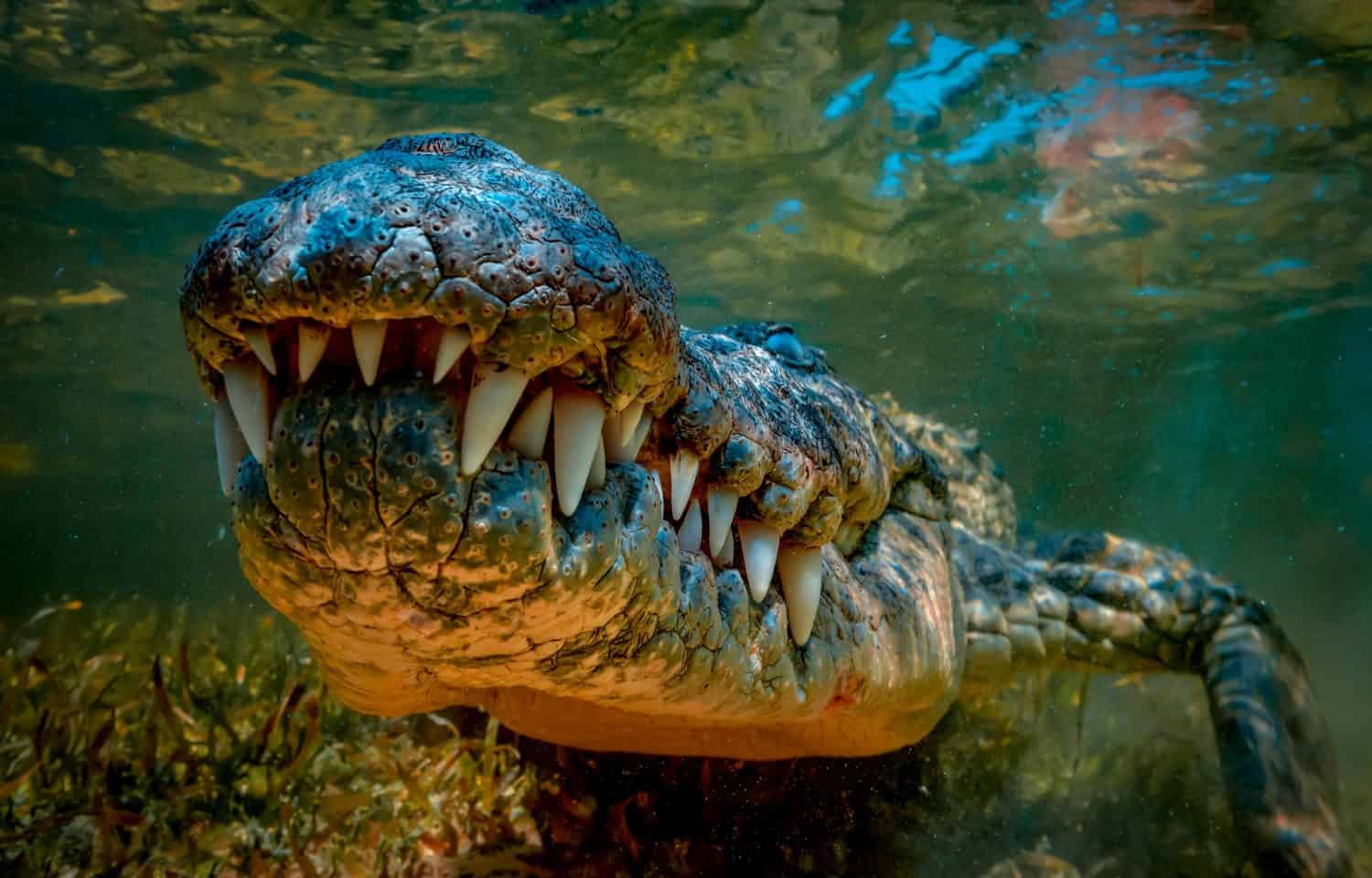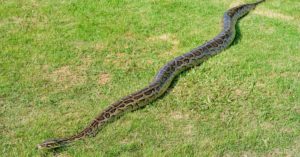Texas, the second-largest state in the United States, is renowned for its vast and diverse terrain, from coastal and central plains to mountains and basins. It is also widely appreciated for its impactful history and famous cuisine. All in all, Texas offers plentiful natural, historic, and tasty wonders. When people think of this state, they are likely not thinking about alligators — but maybe they should! Along with other native animals like bobcats, badgers, and deer, Texas also has a thriving alligator population. With approximately 500,000 American alligators (Alligator mississippiensis), these ancient reptiles can be found in various lakes and rivers throughout the state. Here is a comprehensive list of Texas’s top five most alligator-infested rivers.
5. Guadalupe River

Many Comal County residents report alligator sightings to the Texas Parks and Wildlife Department.
©NaturewomansEye/Shutterstock.com
The Guadalupe River is one of the most alligator-infested rivers in Texas. This spring-fed river is approximately 230 miles long and runs from Canyon Lake Dam toward the coast. Nicknamed the “River of Dreams” by locals, it is a popular destination for rafting, fly-fishing, kayaking, and canoeing. Due to its frequent visitors, plenty of reported alligator sightings have been written. First, in May 2016, a kayaker spotted a three-foot alligator in the upper section of the Guadalupe River. Over the years, five alligators have been captured and removed from this area, the largest measuring over eight feet long! Additionally, many alligators have been photographed by residents living around the Guadalupe River.
4. Trinity River

Since alligators are ectothermic, they rely on external heat sources to regulate their body temperature. As a result, they frequently are spotted sunbathing to help warm up.
©WGN Photos/Shutterstock.com
Located in eastern Texas, the Trinity River runs for over 710 miles. Interestingly, it is the longest river with a watershed entirely within the state. This makes it the perfect water source, supplying over 40% of the state’s population. It has four main branches: the East Fork, the West Fork, the Elm Fork, and the Clear Fork. The average depth of the Trinity River is 30 feet, though frequent flooding has affected this number in certain areas. This lengthy ecosystem also provides the perfect habitat for various wildlife. In addition to chinook salmon and steelhead trout, alligators are common in this area. Sam Kieschnick, an urban wildlife photographer for Texas Parks and Wildlife, reported a stable population of American alligators who regularly travel through the Trinity River to Eagle Mountain Lake.
3. Brazos River

A group of American alligator hatchlings is called a pod. Babies often grunt when they are separated from their mothers. This notable sound can also be heard when hungry, cold, or afraid.
©Marc Pletcher/Shutterstock.com
The Brazos River flows through central and eastern Texas, measuring 840 miles. American alligators are present in this region, with numerous sightings in and around Brazos Bend State Park. This river’s 1,000 acres of water are home to an estimated 250 adult alligators!
2. Nueces River

The Nueces River is home to various animals, including American alligators, deer, coyotes, blue-winged teals, hawks, and
kingfisher
birds.
©Nikolay 007/Shutterstock.com
Located in the southern part of Texas is the Nueces River, a river that starts as a spring-fed stream in Edwards County. It is about 315 miles long and drains 16,950 square miles of water into the Gulf of Mexico. Additionally, this river carries about 620,000 acre-feet of runoff each year! The Nueces River, meaning “River of Nuts,” was coined by early Spanish settlers who noticed the sheer number of pecan trees growing along its banks. Besides its many nuts, this river also supports many American alligators. Though these menacing creatures are not often reported, they have been spotted perusing this river several times. Because of this, it earned second place as one of the most alligator-infested rivers in Texas.
1. Rio Grande River

Measuring 1,896 miles in length, the Rio Grande River has depths ranging significantly from as shallow as 6 feet to upwards of 60 feet. Some of the most common wildlife in and around the river include Texas pocket gophers, ghost-faced bats, and green kingfisher birds. The Rio Grande is also home to thousands of American alligators. Nobody knows the exact number of gators that call this river home — since their numbers dwindle based on environmental factors like drought — but there have been sightings as recent as this past May. Furthermore, a known population is at Laguna Atascosa National Wildlife Refuge, located east of Rio Hondo. While true, the alligator population decreases the further you go from the coast.
Summary of the Top 10 Most Alligator-Infested Rivers in Texas
| Rank | Location |
|---|---|
| 1. | Rio Grande River |
| 2. | Nueces River |
| 3. | Brazos River |
| 4. | Trinity River |
| 5. | Guadalupe River |
| 6. | Colorado River |
| 7. | San Jacinto River |
| 8. | Frio River |
| 9. | Sabine River |
| 10. | Neches River |
The photo featured at the top of this post is © iStock.com/LagunaticPhoto
Thank you for reading! Have some feedback for us? Contact the AZ Animals editorial team.






